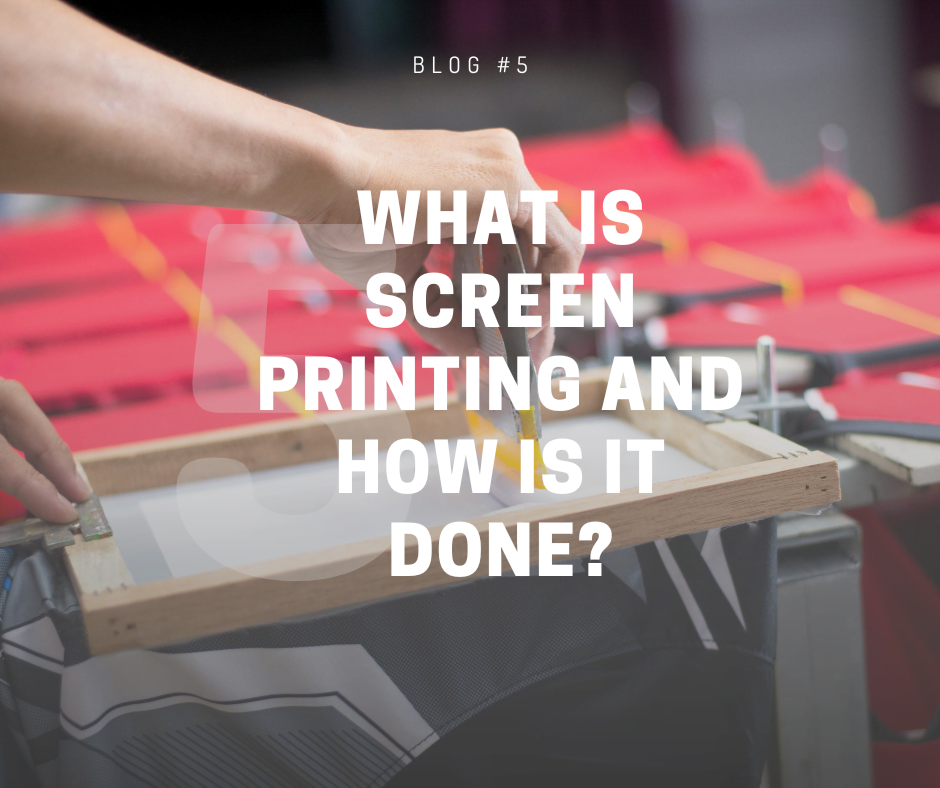What is the screen printing process?
Screen printing is a multi step printing technique which transfers ink onto fabric, and other materials, primarily using a mesh screen, ink, and a squeegee. Printing with screens involves the separation of colors, usually done with design software, and placing these color separations on their own screens. Screen printing is the most popular printing technique for garments being that the solid colors are printed vividly and the print lasts a long time. We can print on almost any material, from screen printing on shirts to screen printing on towels, depending on what your needs are, we can find the right printing solution for you.
How do you make screen printing?
Screen printing your design onto a garment is done by a series of steps. Once production has received the necessary items to bring your design to life, we begin with extracting colors from the design. Using design software, production reduces and separates colors to be printed onto it’s own film. Once the image is printed and transferred onto mesh screens, the design is ready to be screen printed onto hoodies and shirts or any other fabric material. The garment is laid out onto a surface, adjusted for printing placement, and finally, the screen lays onto the shirt to transfer an image mechanically or by hand using a squeegee and ink. After all the colors are transferred onto the garment, it is removed from the surface and placed in a flat bed dryer for curing. At last, there is your shirt with a screen print of your design.
What is screen printing vs digital printing?
Printing technologies vary, that’s why screen printing and digital printing options are available to you depending on the needs of your project. Screen printing and digital printing differences lie in their color printing process.Single color printing is used in screen printing vs digital printing where 4 colors can be printed at once. With printing on screens, solid colors hold a better vibrance and for bulk orders, can have a fast turnaround time. In digital printing, customers can print with no minimums and can print pictures onto a shirt or any other garment.
What are screen printing types?
There are six different types of screen printing. We have spot color screen printing, halftone screen printing, grayscale printing, duotone printing, CMYK screen printing, and simulated process screen printing.
Spot color printing is the most used process, using single solid colors to print at a time. In halftone printing, a single color ink is used to create a gradient effect using halftone dots. Grayscale screen printing uses a whole image and prints the dots in grayscale. This print offers great detail by pulling out colored tones only and switching to grayscale. Duotone screen printing uses the combination of two halftones for printing the same image with two colors. This print result looks like a sepia photograph. CMYK printing is the most complex, printing four colors at one time using Cyan, Magenta, Yellow, and Black. Lastly, simulated process printing screen prints 4 colors at one time and is becoming increasingly popular because of its ability to print realistic imagery using screen printing.
Is screen printing hard?
Screen printing can be both simple and lengthy work depending on the complexity of a project. There is pre work and post work to be done for this printing process to be completed. When screen printing on a hoodie, for example, the pocket causes an uneven surface for transfer, so production has to adjust screen placements to ensure there is enough distance between the screen and fabric for the ink to be applied smoothly and not end up too smudgy. If your project is asking for puff screen printing, there are extra additives that need to be applied to into the ink to create the reaction, also requiring additional steps to cure properly. Screen printing on hats need to be applied using transfer paper and a hot press. These are only a few examples of the screen printing process that show it can go from easy to intricate depending on how elaborate a project is.
What ink is used for screen printing?
With screen printing, there are multiple inks to choose from such as discharge inks, plastisol inks, and water-based inks. Each of these inks have different properties that work well with different materials and print patterns. Working with these inks also requires distinct skill sets and expertise. Different inks produce different feels for the print on fabric. Soft-hand screen prints such as puff printing and even rough crackle ink screen prints are some examples of different types of ink techniques.
What materials are required for screen printing?
The materials required for screen printing include a metal or wooden frame with a mesh screen, a squeegee, ink, a color station mechanism, a conveyor belt dryer for curing, artwork, and a garment or fabric. We can screen print on polyester, cotton, wool, denim, and many more fabrics. Nylon or any other synthetic fabric is to be avoided because they can shrink when drying.
What are the advantages of screen printing?
Screen printing is a fantastic option for printing. It’s long lasting, vivid, and is fast and affordable for large scale projects. Some screen printed garments can last over 20+ years depending on the aftercare of the garment and print. Colors are solid and vivid, and the feel of a screen print is weighty and durable.




